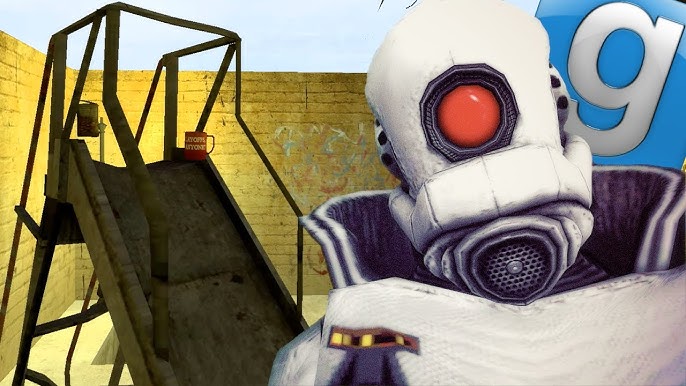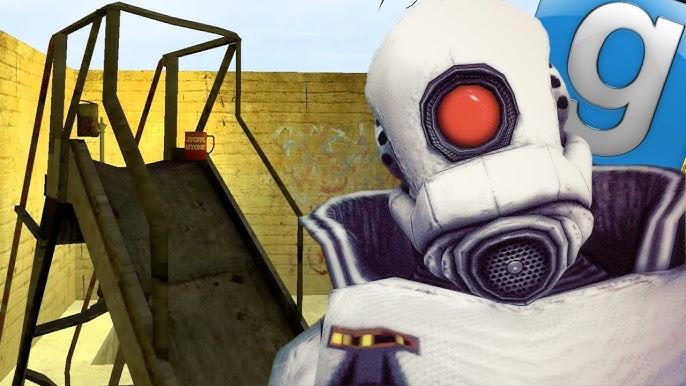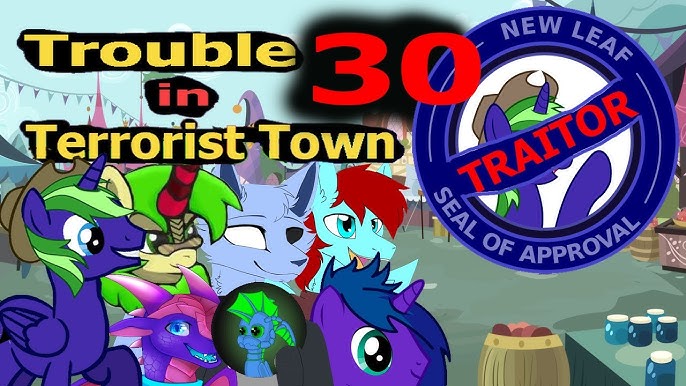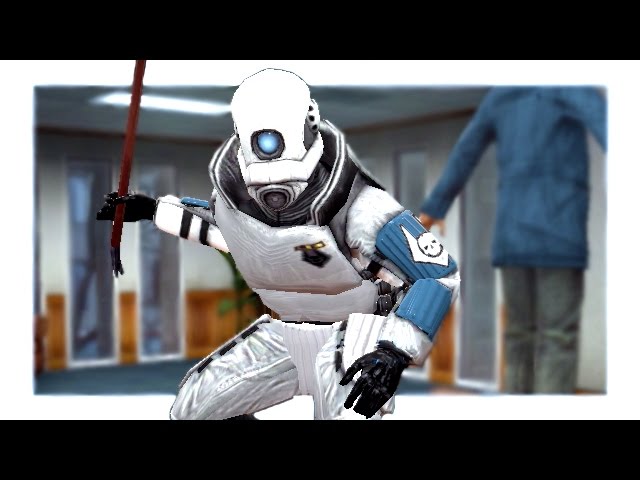From Sandbox Chaos to Custom Classics: A Veteran's Look at Garry's Mod's Game Mode Evolution Garry's Mod.

Garry's Mod. Just the name conjures up a thousand different memories for me, and probably for many of you reading this. I’ve been tinkering with GMod since practically day one, back when it was just a gleam in Garry Newman’s eye. I've seen it evolve from a physics playground into a launching pad for some of the most inventive and downright hilarious game modes ever conceived. Forget carefully crafted AAA experiences; GMod's magic lies in its raw, untamed potential, fueled by the ingenuity of its community. This isn’t just some history lesson; it’s a firsthand account of how a simple sandbox became a breeding ground for gaming innovation.
In the beginning, there was… well, nothing. Glorious, unadulterated nothing. Just a few maps, a handful of ragdolls, and the Source engine’s physics to bend to our will. The initial appeal was simple: absolute freedom. We weren't given objectives; we made them. Remember those early days of building rickety contraptions that would inevitably explode in spectacular fashion? Or those impromptu races across Dust, piloting vehicles cobbled together from crates and wheels? It was chaotic, hilarious, and utterly captivating. This image captures the essence of the early GMod experience, a chaotic sandbox where players experimented with physics and built absurd contraptions without any specific goals. The limitations were obvious, though. After a while, the lack of structure could get a little… directionless. We needed rules, objectives, something to give that beautiful chaos a purpose. And that's when the magic really started to happen.
The Rise of the Machines… Er, Game Modes
The community, bless their collective heart, stepped up. They took the raw potential of GMod and forged it into something truly special: custom game modes. These weren't just simple tweaks; they were full-blown experiences, complete with their own rules, roles, and objectives. And a few really stood out, shaping the GMod landscape forever.
Prop Hunt: Hide and Seek on Steroids
Ah, Prop Hunt. Pure, unadulterated silliness. The core gameplay is brilliantly simple: one team disguises themselves as props (anything from trash cans to toilets), while the other team hunts them down. The tension is palpable, the humor is infectious, and the strategic depth is surprisingly robust.
I remember one time on a server I was admining; someone managed to squeeze themselves into a tiny traffic cone and perfectly blend into a construction site map. The hunters ran right past him for a solid five minutes! The brilliance of Prop Hunt lies in that comedic contrast and the constant battle of wits between hiders and seekers.
The technical challenges were significant. Syncing physics and player movement across the network to make a convincing prop was no easy feat. Getting the hitboxes right so that hunters could actually shoot the props without clipping through everything was a constant balancing act. And let's not forget the endless debates about which props were "too small" or "too OP."  A player cleverly disguised as a trash can amidst a playground in Prop Hunt, highlighting the comedic and strategic elements of the game mode. The subtle depth of field enhances the focus on the cleverly hidden player.
A player cleverly disguised as a trash can amidst a playground in Prop Hunt, highlighting the comedic and strategic elements of the game mode. The subtle depth of field enhances the focus on the cleverly hidden player.
Maps like "office" and "playground" became instant classics, perfectly designed with a multitude of hiding spots and hilarious prop possibilities. Prop Hunt wasn't just a game mode; it was a social experience, a chance to laugh with friends (and strangers) while engaging in some truly ridiculous gameplay.
Trouble in Terrorist Town (TTT): Paranoia and Betrayal
If Prop Hunt was about lighthearted fun, TTT was its darker, more devious cousin. This game mode is a masterclass in social deduction. A group of players is divided into three roles: Innocents, Traitors, and Detectives. The Innocents are trying to survive, the Traitors are trying to kill everyone, and the Detectives are trying to figure out who the Traitors are.
The brilliance of TTT is how it weaponizes communication and observation. Every round is a minefield of suspicion. Who can you trust? Is that player acting a little too nervous? Did you just see someone suspiciously close to that dead body? The paranoia is intoxicating.
Voice communication is key. Accusations fly, alliances are formed (and broken), and the tension ratchets up with every passing second. I’ve seen friendships tested and rivalries forged in the crucible of TTT.
The maps are crucial, too. The dimly lit hallways and tight corridors of maps like "TTT_Minecraft_B5" amplify the paranoia and create a truly unsettling atmosphere. TTT isn't just about shooting; it's about reading people, analyzing behavior, and trusting your gut (even when your gut is screaming that everyone is a Traitor).  A tense standoff in a dimly lit hallway of a TTT map, emphasizing the suspicion and uncertainty that permeate each round. The dramatic lighting and body language convey the high stakes of the social deduction gameplay.
A tense standoff in a dimly lit hallway of a TTT map, emphasizing the suspicion and uncertainty that permeate each round. The dramatic lighting and body language convey the high stakes of the social deduction gameplay.
DarkRP: Building a Virtual Society (One Arrest at a Time)
DarkRP is a whole different beast. It's a role-playing game mode where players inhabit a persistent world, choosing from a variety of professions like police officer, criminal, mayor, or even a humble shopkeeper. The goal? To build a virtual society, complete with its own economy, laws, and social structures.
What makes DarkRP so compelling is the emergent storytelling. You never know what's going to happen next. Maybe a corrupt cop will try to shake you down for protection money. Maybe a gang war will erupt in the streets. Maybe the mayor will enact a series of increasingly bizarre and tyrannical laws.
I spent months running a DarkRP server, and it was an absolute rollercoaster. I saw players build thriving businesses, create elaborate criminal empires, and even form political parties to challenge the mayor's authority. The level of creativity and dedication was astounding.
The in-game economies are surprisingly complex. Players buy and sell goods, invest in properties, and even start their own businesses. The laws, often dictated by the players themselves, can range from the mundane (no loitering) to the absurd (mandatory hat-wearing).
DarkRP isn't without its challenges, of course. Maintaining order, preventing abuse, and balancing the economy requires constant vigilance. But when it works, it's an incredibly rewarding experience, a testament to the power of player-driven content.  A bustling scene from a DarkRP server showcasing a diverse group of players in various roles, set against a detailed city street. The realistic lighting and textures enhance the sense of immersion and highlight the complexity of the role-playing environment.
A bustling scene from a DarkRP server showcasing a diverse group of players in various roles, set against a detailed city street. The realistic lighting and textures enhance the sense of immersion and highlight the complexity of the role-playing environment.
Murder: Survive the Night
In Murder, one player is the Murderer, one player is the Detective, and all the other players are Innocents. The Murderer's goal is to eliminate everyone before the time runs out, using stealth and cunning to avoid detection. The Detective must use their wits and any clues they can find to identify and stop the Murderer, while the Innocents must try to survive and assist the Detective if possible. The tension and paranoia created by the unknown identity of the Murderer make for thrilling and unpredictable gameplay.  A dark room is illuminated only by the flash of a muzzle, with furniture barely visible, highlighting the stealth and tension in Murder.
A dark room is illuminated only by the flash of a muzzle, with furniture barely visible, highlighting the stealth and tension in Murder.
The Technical Wizardry Behind the Curtain
Creating and maintaining these game modes was no walk in the park. It required a deep understanding of Lua scripting, the language that powers GMod's customization. Optimizing performance for large player counts was a constant battle. And let's not forget the endless war against exploits and cheating.
The GMod community is full of incredibly talented developers who pushed the engine to its limits. Libraries like "ULX" and "PAC3" became essential tools for server administrators and modders alike, providing powerful features for managing players, customizing content, and creating immersive experiences. There were also countless of dedicated individuals tirelessly patching vulnerabilities and developing anti-cheat measures. It was a true collaborative effort. The GMod Workshop was a true goldmine of content.
A Lasting Legacy
The evolution of custom game modes in Garry's Mod is more than just a story about a video game; it's a story about community, creativity, and the power of player-driven content. These modes shaped the GMod community, fostering a culture of collaboration, innovation, and sheer, unadulterated fun. And their influence extends far beyond the confines of GMod itself. You see elements of Prop Hunt in games like Fortnite, the social deduction mechanics of TTT in Among Us, and the emergent storytelling of DarkRP in countless online role-playing games.
 A stylized image representing Garry's Mod, showcasing the diverse and creative elements that have shaped its community and legacy.
A stylized image representing Garry's Mod, showcasing the diverse and creative elements that have shaped its community and legacy.
The lessons learned from GMod's community-driven content creation can be applied to other games and platforms. By empowering players with the tools to create and share their own experiences, developers can unlock a wellspring of innovation and build thriving communities around their games. GMod wasn't just a game; it was a platform for creativity, a testament to the power of the modding community, and a glimpse into the future of gaming.